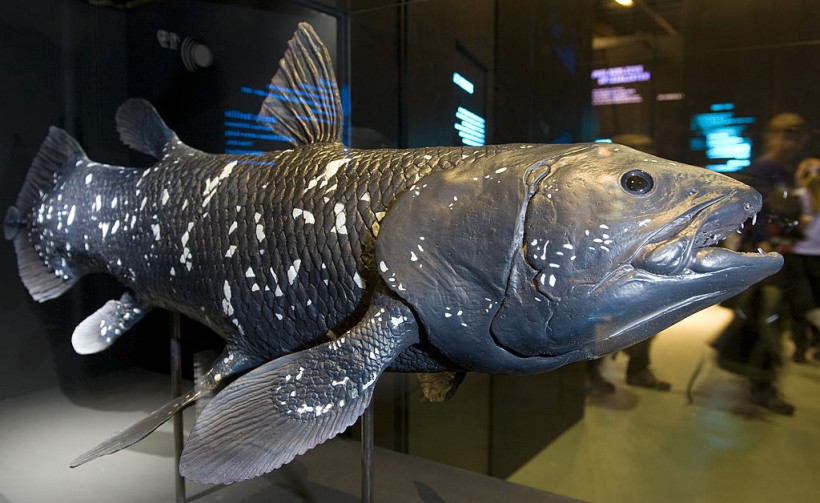Researchers are studying an ancient fish known as a living fossil to understand the fundamentals of stem cells. According to SciTech Daily, they found a gene that only exists in this fish that could play a significant role in stem cells to make artificial organs for humans.
A lab-grown beating heart may sound extreme, but stem cells have the potential to save the lives of people with organ failure. As stem cell research advances toward the production of artificial organs the perspective of a lab-grown beating heart may alter the future of medicine.

A model of a "Coelacanth fish" is displayed at the exhibition hall Japanese Palais new exhibition "Tiefsee" (Deep Sea), on November 4, 2010 in Dresden, eastern Germany.
Uncovering the Evolutionary Origins of a Master Gene in Understanding Stem Cells
The first step in creating artificial organs is to understand stem cells and the genetic instructions that govern them. Professor Joshua Mark Brickman at the Novo Nordisk Foundation Center for Stem Cell Medicine (reNEW) found the evolutionary origins of a master gene that acts on a network of genes that tells stem cells what to do.
He said that understanding the gene regulatory network that supports pluripotent stem cells will help provide knowledge about how to make better stem cells. Pluripotent stem cells can develop into any cells, like heart cells, that could lead to the development of an artificial heart.
In their study, titled "Evolutionary Origin of Vertebrate OCT4/POU5 Functions in Supporting Pluripotency" published in the journal Nature Communications, Brickman and colleagues wrote that the master gene that controls stem cells and supports pluripotency exists in the ancient fish called coelacanth.
In humans, this gene is called OCT 4, but the coelacanth version could replace the mammalian version in stem cells. The coelacanth is considered a living fossil that is from a different class from mammals. They are approximately 400 million years old that developed into their modern form today with fins shaped like limbs, which makes them look like the first animals to move from the sea onto land.
Assistant Professor Molly Lowndes noted that studying the coelacanth's cells will give an insight into evolution. Assistant Professor Woranop Sukparangsi added that given that the central factor controlling the gene network of stem cells is found in them, it means that the network existed early in evolution.
Researchers believe that studying the network in other species, such as this fish, could help them distill the basic concepts that support stem cells.
READ ALSO: High-Frequency Sound Waves Turn Stem Cells Turn Into Bones for Regrowth, Replacement
Evolution Modified the Network of Genes to Support Pluripotent Stem Cells
Aside from discovering that the network surrounding stem cells is far older than previously assumed and that it exists in ancient species, researchers also found how evolution has altered the network of genes to support pluripotent stem cells.
As per Science Daily, the scientists examined the stem cell genes of over 40 mammals, including sharks, mice, and kangaroos. The species were chosen to offer a decent representation of the major evolutionary branch points.
They employed artificial intelligence (AI) to create 3D models of the various OCT4 proteins and found that the protein's overall structure has been preserved throughout evolution.
Although the parts of these proteins known to be critical for stem cells remain unchanged, changes in specific species in seemingly unrelated areas of these proteins change their orientation, which might have impacted how effectively it promotes pluripotency.
Brickman said that it was an exciting finding about evolution that would be impossible before the advent of new techniques. He describes it as evolution moving the engine of a car around and improving the drive train to see if it can make the car go faster.
RELATED ARTICLE: 3D-Printed Eye Tissue From Stem Cells Could Lead to Breakthrough in Treating Degenerative Eye Diseases
Check out more news and information on Stem Cells in Science Times.














